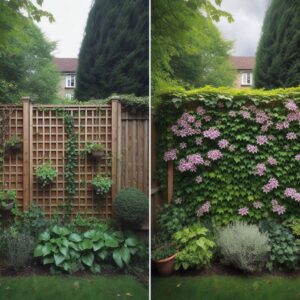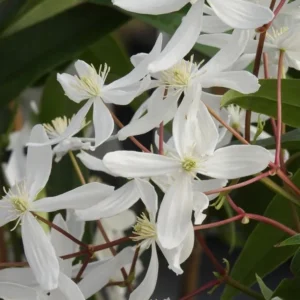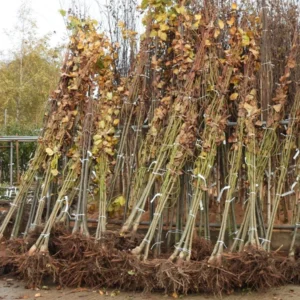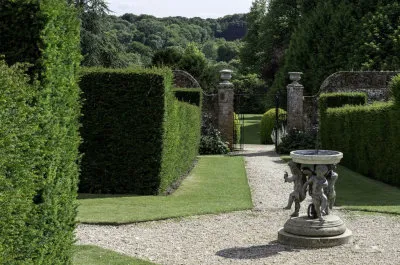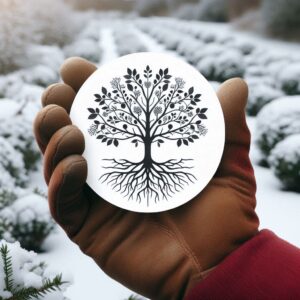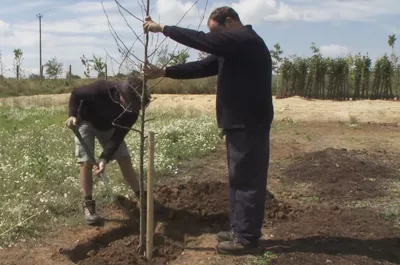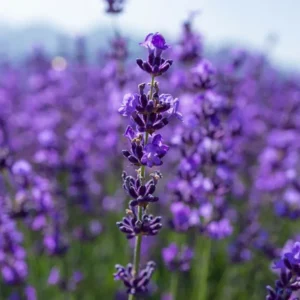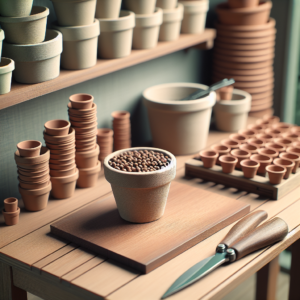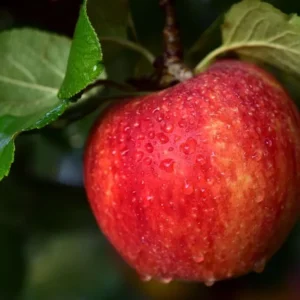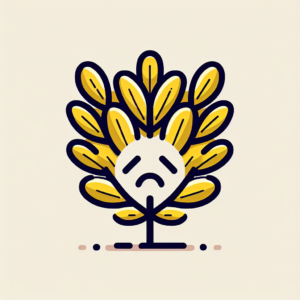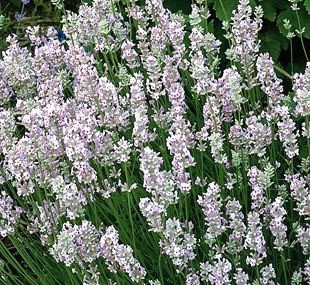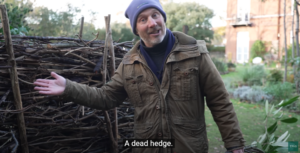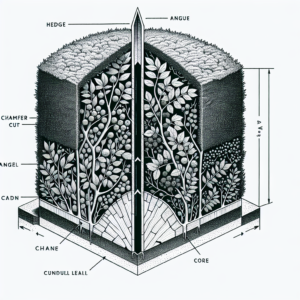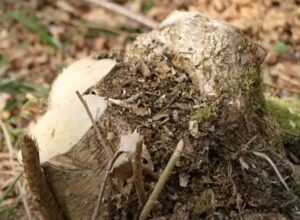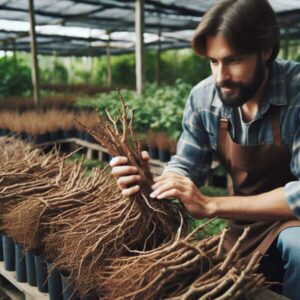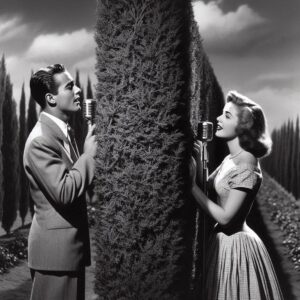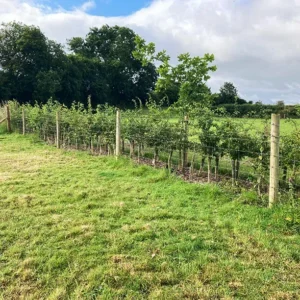Climbing Plants Hide A Lot of Fence for a Small Footprint In many cosy gardens, the vertical surface area of fence is larger than the soil surface! Putting a hedge in front of a fence has the advantage of keeping the fence itself free for maintenance, and there is no risk of plants getting too… Continue reading Best Plants For Growing Over & Covering Fences
Bareroot Season: Last Days of Hedging!
We have had a good run of chilly April nights, which are forecast to linger into the end of the month. At Ashridge, the winter planting season for 2024 / 2025 is all but over: some of the toughest and most popular bareroot hedging plants remain, probably until the end of the week, maybe Monday… Continue reading Bareroot Season: Last Days of Hedging!
How Deep Do I Plant a Clematis?
Most people plant their Clematis vines a little deep, the British Clematis Society says: “Ensure that the surface of the root ball is at least 3″ / 7.5cm below the level of the surrounding soil.” In our clematis growing guide, we add that even up to 6″ / 15cm below soil level is good for… Continue reading How Deep Do I Plant a Clematis?
Ashridge Nurseries Service Reviews
Our customers review our service
What Are Bare Root Plants?
Bareroot means delivered dormant in Winter with no soil around the roots.
Planting a Garden Hedge Like Beech, Yew, Laurel
How to Trench Plant a garden hedge like Privet, Beech, L:aurel, or Yew in well dug soil
Planting A Bareroot Mixed Native Country Hedge
How to Slit Plant bareroot whips like Hawthorn in mixed native hedges
How to Plant a Tree With a Stake
Planting with a stake is optional but highly recommended.
Is Lavender Native to the UK?
No, Lavender is not native to the UK, it’s a Mediterranean plant. The Romans introduced lavender to Britain over 1,500 years ago, using the flowers to scent and wash themselves; the word itself is from the Latin lavare, to wash. Their legionaries carried dried lavender to pack into bandages for its antibacterial properties, and it… Continue reading Is Lavender Native to the UK?
Backseat Driving Thatcher’s Cider Biodiversity
I saw this article in HortWeek: Thatchers Cider plants 13,000 apple trees in new Somerset orchard. I made a mental wager to myself before reading it: I bet they exaggerate the environmental benefit side of the orchard. Not because of anything about Thatchers Cider. It’s because I think it’s nigh impossible to write a press… Continue reading Backseat Driving Thatcher’s Cider Biodiversity
How Big is a P9 Pot & What No One Tells You!
A P9 pot is 9cm wide at the top, containing about half a litre of soil It would be clearer if P9s were called “half litre pots”, but the industry standard is to measure pots under 1 litre by their width in centimetres, rather than their volume in litres. P9 is the smallest pot size… Continue reading How Big is a P9 Pot & What No One Tells You!
April Weather: Bareroot Season Extension!
Last month we looked at the weather forecast for the fictional city of Leeds and proposed the real likelihood of a late Spring. Although there were some warmer days, there were also colder nights, with frost much as predicted. Looking at the April forecast, there are cold (under 7C) nights for the first 12 days,… Continue reading April Weather: Bareroot Season Extension!
Which Fruit Trees Grow Best in the UK?
This article is about fruit trees out in your garden, or grown on wires against a wall, rather than a green house or polytunnel. Just tell me the best fruit trees to grow in the UK, please Quick Overview of Fruit Trees Grown in British Gardens People planting a fruit tree or two in their… Continue reading Which Fruit Trees Grow Best in the UK?
Monty Don Gives the Green Light for Aerating Lawns
This episode of totally healthy and appropriate fawning over Monty Don is brought to you by the phrase “Monty Don shares”. Disappointed as we were to discover that Monty is not called Mo’ Dough, nor Monty Donty, or even just George at home, and underwhelming as the “news” that hazel trees live for over 34… Continue reading Monty Don Gives the Green Light for Aerating Lawns
Why We Don’t Sell Isaac Newton’s Apple Tree
It’s not a very good apple. Simple as that. Several years ago, we sold “Isaac Newton’s apple tree”, which is already a part-fib. Flower of Kent is a good example of why many grand old heritage varieties are no longer grown. They were the best available in their day, but now they are outclassed in… Continue reading Why We Don’t Sell Isaac Newton’s Apple Tree
3 Steps to Set Up an Amazon grade Polytunnel like a Pro
Polytunnels are amazing if they are yours, somewhat unattractive if they are your neighbour’s (a hedge in between might help), and most gardens have space for a wee one. But if you get a regular old polytunnel from Amazon and set it up like the vanilla instructions say, then I am here to tell you… Continue reading 3 Steps to Set Up an Amazon grade Polytunnel like a Pro
Why Are My Cherry Laurel Leaves Turning Yellow?
It is true that Cherry Laurel, Prunus laurocerasus, is a trooper and will grow almost anywhere, but that is not the same as looking tip top as a hedge in all situations. A few yellow leaves here and there are natural, especially in the early years after transplanting when it’s still catching up on root… Continue reading Why Are My Cherry Laurel Leaves Turning Yellow?
Backseat Driving: Do I Need To Stake A Tree?
Picking on Huw Richards Inspires Us to Make Better Tree Planting Videos At Ashridge, we feel a bit responsible for how well people plant trees. We are not the the Huw Richards police; we would never pick on him because he is YouTube famous and we want some of that. We totally agree with his… Continue reading Backseat Driving: Do I Need To Stake A Tree?
Partial Self Fertility in Fruit Trees Like Summer Sun
One of our customers, M, got in touch with a fruit tree pollination question, asking about the difference between: M had bought a Summer Sun cherry tree, and noted that the RHS said she’s partially self-fertile, whereas we clearly state that she’s practically kinda almost self-fertile. Other top garden sites like Garden Focused lean toward… Continue reading Partial Self Fertility in Fruit Trees Like Summer Sun
Trim Lavender Around Late February / March
This post is a bit late for getting in a February trim, but since the weather has been fresh and plants slow to wake up, we got away with it. Our school of thought on clipping Lavender is to do it twice a year: The first trim needs to be done by early March. This… Continue reading Trim Lavender Around Late February / March
Can I Slit Plant Bareroot Hedge & Tree Whips into Grass?
Establishing trees & hedges should be kept clear of grass & weeds
RHS Dead Hedge In The City Video
The RHS has produced a dear little video that very sweetly promotes hedges over fences on the basis of their usefullness and environmental value. On a debatably even sweeter premise, I will offer my dear little criticisms in the traditional manner of my people, the backseat driving folk of Somerset: RHS Horticultural Advisor Nick Turrell… Continue reading RHS Dead Hedge In The City Video
Collecting Your Order From Ashridge
Park safely when you come to collect your order
Cutting A Chamfer Into Your Hedge When Trimming
An angled cut along the top corner of a hedge lets more light in
How to Say Coppice and Coppicing
The managed woodland is a copse (coppice), the pruning action is to coppice
Which Plants To Use in a Mixed Native Hedge
Most mixed native hedges are mainly hawthorn or blackthorn
March Weather: Happy Bareroot Planting Days
March 2025 is looking to be an exceptionally good bareroot planting month
Get As Many Fruit Varieties As Possible From A Small Area
Cordon apples & pears are even better suited to grafting than freestanding trees
Trimming Country Hedge Season & Cycle
Unlike garden hedges, country hedges are typically trimmed every 2-3 years
You Won’t Believe This Irish Hedge
Laying mulch fabric before VS after planting.
Do Hedges Block Road Noise & Other Sounds?
Hedges don’t reduce road noise
Countryside Stewardship Hedge Grants
The Countryside Stewardship new hedge grant BN11 covers the cost of a native hedge
Are My Plants Dead?
Bareroot plants can be very late coming into leaf & evergreens can drop their leaves

